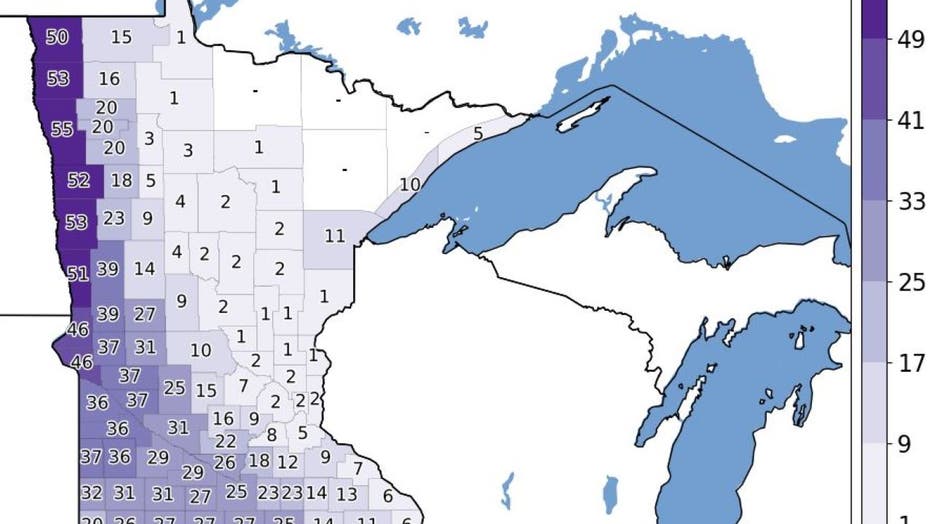Blizzards in Minnesota: Here's what makes a storm a blizzard

Thursday's forecast: Lull ahead of blizzard-like conditions tonight
After snow on Wednesday, there will be a lull for much of the day on Thursday. But blizzard-like conditions are expected Thursday night through Saturday morning. A blizzard warning goes into effect for much of southwestern Minnesota as well as a portion of the southwest metro.
MINNEAPOLIS (FOX 9) - In the weather world, we don't use the word "blizzard" lightly. This is because this is the "worst of the worst" conditions that can occur in the winter. There is no wording more intense when dealing with wintry conditions.
This is because we try to separate the truly life-threatening situations from just the "usual" or "mundane". Because of this, the ability for Mother Nature to produce a dictionary definition of a blizzard is quite rare. The National Weather Service issues a blizzard warning when sustained winds or consistent wind gusts will be greater than 35 mph and visibility will be a quarter mile or less for at least three consecutive hours.
RELATED: Minnesota weather: Slippery roads ahead of blizzard-like conditions Thursday
Now, it might seem like we talk about blizzards a lot around here — and when comparing us to the rest of the country (and the world really), we do! That's because we live in one of the most blizzard-prone regions in the world. To get many consecutive hours of whiteout conditions, you need dry snow and a lot of flat open terrain. I pretty much just described the northern Plains of the U.S. and the central Plains of Canada. That puts us in what could be described as "blizzard alley". This is just an anecdotal term for the area of the Lower 48 that experiences by far the most blizzards. It encompasses the Dakotas, western Minnesota, and northern Iowa. You can see that by just the sheer number of times each country across the state has been under a blizzard warning since the year 2000.

The number of blizzards since 2000.
Counties that border the Red River have experienced more than 50 blizzard warnings since 2000. That's more than two a year on average. This is considered to be the heart of blizzard country across the entire U.S. But the warnings drastically decrease as you head eastward into central Minnesota. This is because there is far more vegetation and tree cover in these areas which can knock down the wind and prevent true whiteout conditions, even in some of the strongest storms. The Twin Cities live on the edge of blizzard alley so to speak, with the far western metro counties with half a dozen or more blizzard warnings in the last 20 or so years. However, the heart of the metro has experienced just two since 2000. Both of those have happened since 2018.
Now, there is no criteria in a blizzard warning for the amount of cold involved — meaning you can have a blizzard at 30 degrees or -30 degrees. This time around it will happen with dangerously cold temperatures adding just another element to the already impactful weather phenomena that can make it just that much more life-threatening, so please heed any and all warnings heading into the holiday.

Numerous crashes amid winter storm, snow in Twin Cities: RAW
Snow on Wednesday, Dec. 21, 2022, led to numerous crashes and spinouts on Minnesota roads. Here's a compilation of incidents captured on MnDOT traffic cameras.

